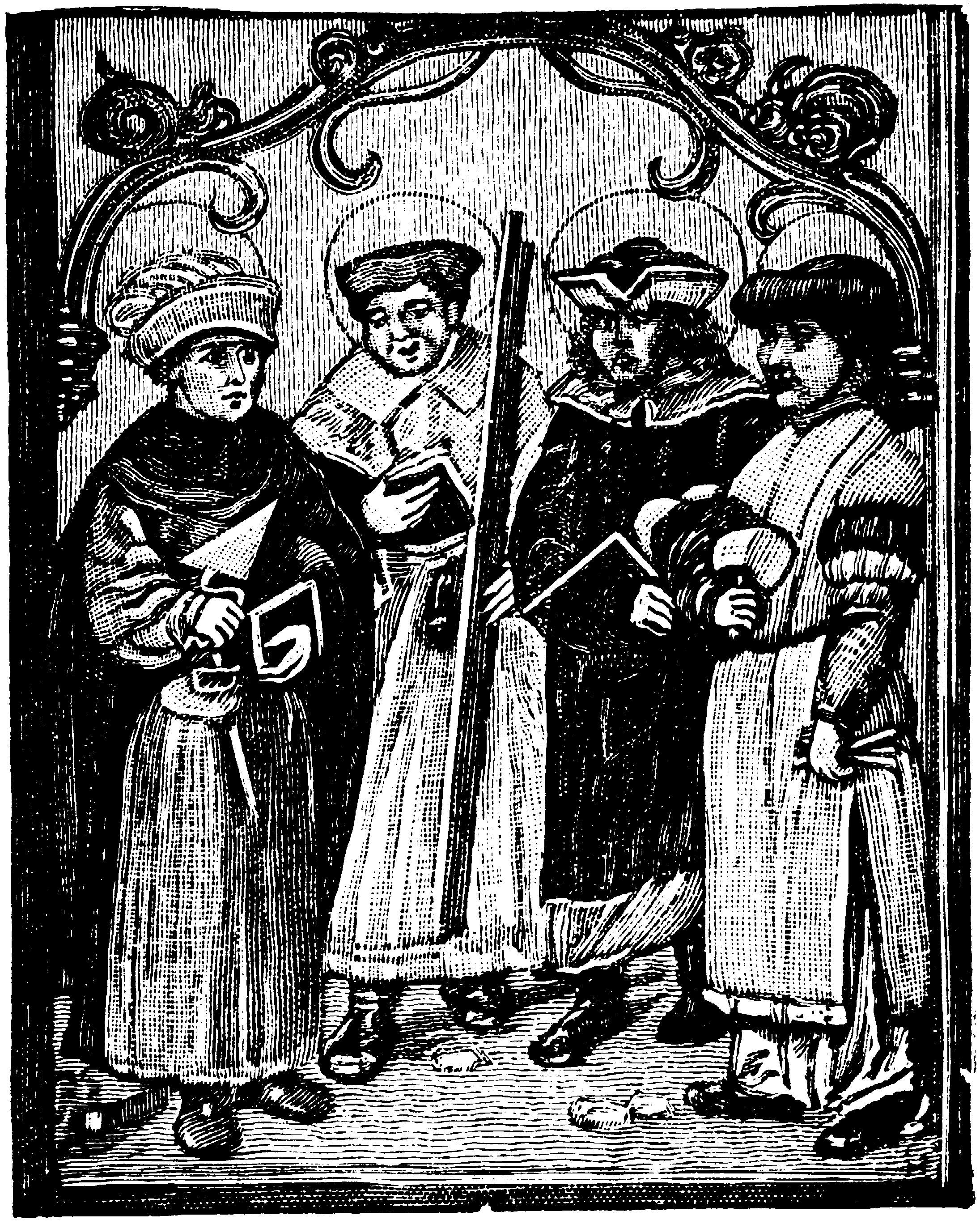The Legend of the Quatuor Coronati
When in AD 298 the Emperor Diocletian was building his baths on the necks of the Quirinal and Virminal hills he included within its vast circuit a temple to Æsculapius, the god of health. He ordered the five sculptors, Claudius, Nicostratus, Sinforianus, Castorinus, and Simplicius to execute the decorative work and make the statue of Æsculapius.
Being Christians they refused to fashion the statue of a pagan god, and in consequence they were put to death on 8 November 298. Three were beheaded and two were scourged to death. Other artists were found who executed the work for the Emperor.
On the return of Diocletian to Rome in 300, finding the works completed, he issued an order for their dedication, and commanded that all the soldiers in Rome should be present, who, as they marched past, were to throw incense over the altar of Æsculapius.
As soon as this command was propagated, four brothers, who were master masons, and held the position of Corniculari, or wing-leaders of the city militia, met to decide what they should do under the circumstances. These brothers were named Severus, Severianus, Carporferus, and Victorianus, who, besides being Masons, had embraced the Christian faith. They all agreed to abstain from throwing the incense over the altar, it being against their principles to assist in any way at pagan ceremonies of a religious nature. This determination they made known to their centurion, who communicated it to the tribune, Lampadius, who reported the matter to Diocletian. The Emperor ordered them either to sacrifice or suffer death. They, steadfast to their faith, suffered death by being scourged with leaden thongs. Their bodies were then enclosed in leaden cases and thrown into the river Tiber.
A brother, Nicodemus, recovered their bodies from the river, and they were interred by the side of the five sculptors previously martyred, and other saints, in the catacombs on the Via Labricana, which from the four Master Masons are to this day known as the Catacombs of the Quattro Coronati.
Source: S. Russell Forbes, Rambles in Rome, (1882), p. 196.
The following passage is taken from their website:
Those who would want to download some of the proceedings of the AQC can do so using this link.The Quatuor Coronati Lodge, No. 2076 (United Grand Lodge of England). was founded in 1884 by nine Brethren who were intent on using an evidence-based approach to the study of Masonic history and research into Freemasonry.
This innovative approach was intended to replace the imaginative writings of earlier authors on the history of Freemasonry. This new style and approach was later to be referred to as the ‘authentic school’ of Masonic research.
The Founders planned to develop an interest in research among Brethren everywhere, to have papers read and discussed in Lodge and published in its transactions: Ars Quatuor Coronatorum (AQC). The Lodge thus hoped to attract the attention and enlist the cooperation of Masonic scholars in all parts of the world.
Quatuor Coronati Lodge, the Premier Lodge of Masonic Research, continues today to work to the standards laid down in 1884 and we strive to maintain the high quality of research and discussion established at our foundation.






